Showing Spotlights 17 - 24 of 158 in category All (newest first):
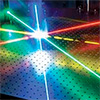 As AI and nanophotonics have distinct backgrounds, there is often a knowledge gap for those interested in this interdisciplinary area. A new book, the first of its kind, aims to introduce the fundamentals of both nanophotonics and machine learning, specifically deep learning, and to help readers understand how these fields can enhance each other.
As AI and nanophotonics have distinct backgrounds, there is often a knowledge gap for those interested in this interdisciplinary area. A new book, the first of its kind, aims to introduce the fundamentals of both nanophotonics and machine learning, specifically deep learning, and to help readers understand how these fields can enhance each other.
Mar 30th, 2023
 Researchers demonstrate a new way to create chiral nanostructures using a laser beam. By carefully controlling the direction of the laser beam's vibrations, the researchers created a variety of chiral structures made of platinum oxide in unique shapes, like twisted micropillars and spiral superstructures.
Researchers demonstrate a new way to create chiral nanostructures using a laser beam. By carefully controlling the direction of the laser beam's vibrations, the researchers created a variety of chiral structures made of platinum oxide in unique shapes, like twisted micropillars and spiral superstructures.
Mar 22nd, 2023
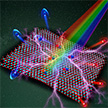 Near-infrared photodetectors play a significant role in many aspects of research and daily life and twisted-angle-induced unusual electrical and optical properties in van der Waals homostructures have received extraordinary attention recently. However, these emerging properties have rarely been applied to optoelectronic devices. Here, researchers demonstrate broadband photoresponse capable of overcoming the band-gap limitation of semiconductors in the twisted lead iodide homostructures.
Near-infrared photodetectors play a significant role in many aspects of research and daily life and twisted-angle-induced unusual electrical and optical properties in van der Waals homostructures have received extraordinary attention recently. However, these emerging properties have rarely been applied to optoelectronic devices. Here, researchers demonstrate broadband photoresponse capable of overcoming the band-gap limitation of semiconductors in the twisted lead iodide homostructures.
Oct 26th, 2022
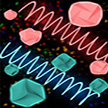 Artificially engineered chiral materials with exceptional light-manipulating capabilities show significantly enhanced chiroptical response and capability of light manipulation, which have emerged as a promising chiral platform for applications in biosensing, catalysis, and photonics. Scientists now report a novel class of chiral materials called bichiral nanoparticles that can easily tune the sign of circular dichroism through the hybridization of bichiral centers without inverting the geometric chirality.
Artificially engineered chiral materials with exceptional light-manipulating capabilities show significantly enhanced chiroptical response and capability of light manipulation, which have emerged as a promising chiral platform for applications in biosensing, catalysis, and photonics. Scientists now report a novel class of chiral materials called bichiral nanoparticles that can easily tune the sign of circular dichroism through the hybridization of bichiral centers without inverting the geometric chirality.
Oct 18th, 2022
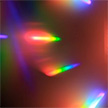 In an effort to reduce the size of optical spectrometers, researchers have been working on developing miniature on-chip spectrometers that could be integrated into small handheld devices or even smartphones. Now, reducing the size down to the micrometer scale, researchers have developed a single-dot spectrometer based on an in situ modulated perovskite photodetector. The device is enabled by photogain manipulation controlled by ion redistribution in the perovskite film under an externally applied bias. This unique spectrometer design breaks the footprint-resolution restriction of spectrum analysis and leads to a new design direction of perovskite in situ modulation for the development of new functional devices.
In an effort to reduce the size of optical spectrometers, researchers have been working on developing miniature on-chip spectrometers that could be integrated into small handheld devices or even smartphones. Now, reducing the size down to the micrometer scale, researchers have developed a single-dot spectrometer based on an in situ modulated perovskite photodetector. The device is enabled by photogain manipulation controlled by ion redistribution in the perovskite film under an externally applied bias. This unique spectrometer design breaks the footprint-resolution restriction of spectrum analysis and leads to a new design direction of perovskite in situ modulation for the development of new functional devices.
Oct 13th, 2022
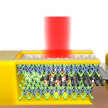 Blackbody response is highly desired in two-dimensional (2D) infrared photodetectors, which determines their practical applications. However, limited by the thickness and complex defects of 2D materials, 2D photodetectors still suffer from problems such as low quantum efficiency and large dark current. Researchers now demonstrate fully depleted self-aligned van der Waals (vdW) photodetectors based on a heterosandwiched structure.
Blackbody response is highly desired in two-dimensional (2D) infrared photodetectors, which determines their practical applications. However, limited by the thickness and complex defects of 2D materials, 2D photodetectors still suffer from problems such as low quantum efficiency and large dark current. Researchers now demonstrate fully depleted self-aligned van der Waals (vdW) photodetectors based on a heterosandwiched structure.
Sep 2nd, 2022
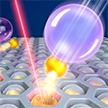 One convenient way to manipulate nanoscale objects with remote controllability is actuation and propulsion by light, which is largely based on optical and photothermal-induced forces. Unfortunately, the output of optical and photothermal-induced forces is small and speed is slow. This changes with a novel and intriguing nanoactuation system: plasmonic nanodynamite. This system can be optically triggered to eject gold nanobullets with an initial speed of up to 300 m/s.
One convenient way to manipulate nanoscale objects with remote controllability is actuation and propulsion by light, which is largely based on optical and photothermal-induced forces. Unfortunately, the output of optical and photothermal-induced forces is small and speed is slow. This changes with a novel and intriguing nanoactuation system: plasmonic nanodynamite. This system can be optically triggered to eject gold nanobullets with an initial speed of up to 300 m/s.
Aug 8th, 2022
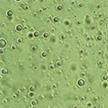 Spontaneous charging of interfaces between water and hydrophobic media is a mysterious feature whose nature and origin - despite many efforts to explain them - are still not fully understood. Many spectroscopic results and interpretations along with computational work are not consistent with one another and a consensus on the nature and origin of interfacial charging has not been reached. A clear understanding of this puzzling phenomenon needs a variety of approaches from diverse perspectives, which, hopefully will all add up and be pieced together towards a complete description of the full picture.
Spontaneous charging of interfaces between water and hydrophobic media is a mysterious feature whose nature and origin - despite many efforts to explain them - are still not fully understood. Many spectroscopic results and interpretations along with computational work are not consistent with one another and a consensus on the nature and origin of interfacial charging has not been reached. A clear understanding of this puzzling phenomenon needs a variety of approaches from diverse perspectives, which, hopefully will all add up and be pieced together towards a complete description of the full picture.
Jul 7th, 2022
 As AI and nanophotonics have distinct backgrounds, there is often a knowledge gap for those interested in this interdisciplinary area. A new book, the first of its kind, aims to introduce the fundamentals of both nanophotonics and machine learning, specifically deep learning, and to help readers understand how these fields can enhance each other.
As AI and nanophotonics have distinct backgrounds, there is often a knowledge gap for those interested in this interdisciplinary area. A new book, the first of its kind, aims to introduce the fundamentals of both nanophotonics and machine learning, specifically deep learning, and to help readers understand how these fields can enhance each other.
 Subscribe to our Nanotechnology Spotlight feed
Subscribe to our Nanotechnology Spotlight feed





